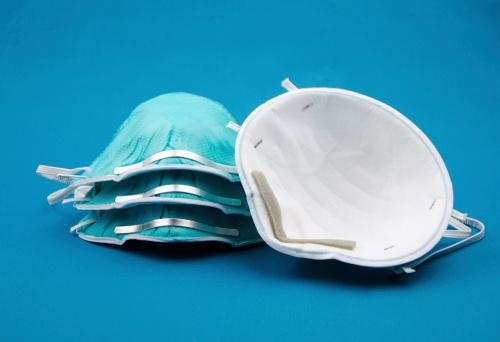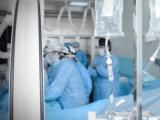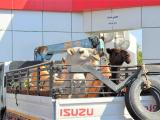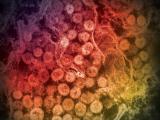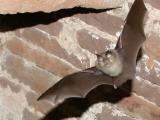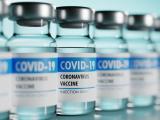Editor's Note: Today's commentary was submitted to CIDRAP by the authors. Dr Brosseau is a Professor and Dr Jones an Assistant Professor in the School of Public Health, Division of Environmental and Occupational Health Sciences, at the University of Illinois at Chicago.
_____________________________________
Although US and European officials recommend airborne precautions for the routine care of MERS-CoV (Middle East respiratory syndrome coronavirus) patients, the World Health Organization (WHO) does not, and that needs to change.
Compelling evidence and prudence dictate higher levels of respiratory protection, and even guidance from the US Centers for Disease Control and Prevention (CDC) falls short. In addition, the example 2 days ago of likely MERS transmission in Indiana after contact in a business setting illustrates that recommendations need to lean toward conservative measures for this unpredictable virus.
MERS perils for health workers
As of May 6, 96 (19%) of the 495 known Middle East respiratory syndrome coronavirus (MERS-CoV) cases, including a number of fatalities, were in healthcare workers (HCWs), and the number of infected HCWs continues to climb.
The vast majority of HCW cases—74%—have occurred in the Kingdom of Saudi Arabia, with 24% in the United Arab Emirates. Sixty-three HCW cases—or almost two thirds—were reported last month alone, and more than 60% of the 128 recent MERS patients in Jeddah were infected in a hospital, including 39 HCWs, 6 of whom required intensive care or died.1
On May 2 the first US MERS case was reported in Indiana, with the second following on May 12 in Florida. Both cases were in HCWs who were working in healthcare facilities in Saudi Arabia before traveling to the United States.
The CDC on May 17 reported that the first US patient likely passed the virus to a colleague in Indiana after two business meetings in which they were in close proximity and shook hands. The infected HCW said he had muscle aches and a fever but no respiratory symptoms at the time he met with the man who is now the nation's third case-patient. In Florida, emergency department HCWs were reportedly not wearing masks while caring for the MERS patient there before MERS was suspected.
Just as with the severe acute respiratory syndrome (SARS) coronovirus outbreaks in Asia and Canada in 2003, it is clear that HCWs are at high risk of infection, disease, and death from MERS-CoV. Even if HCWs are more likely to be asymptomatic or develop mild disease because they tend to be young and healthy, their work brings them into contact with patients who are at high risk of serious disease. Protecting HCWs is an important factor for limiting nosocomial outbreaks.
It has been demonstrated that person-to-person transmission of MERS is likely in healthcare settings.2 And although it is not yet known whether this is due to direct contact with infectious droplets or indirect contact with or inhalation of infectious droplet nuclei, given the strong similarities between MERS and SARS, the precautionary principle—that action to reduce risk should not await scientific certainty—suggests it would be wise to require the use of respiratory protection during all encounters with patients known to be or suspected of being infected with MERS-CoV.
Risk factors for MERS-CoV transmission
It is inappropriate and premature to conclude that MERS is not an airborne or aerosol-transmissible disease—especially in healthcare settings.
Just as with SARS, MERS causes both respiratory and gastrointestinal infections, which are accompanied by cough, diarrhea, and vomiting. Just as with SARS, a variety of aerosol-generating healthcare procedures may be used to treat MERS patients.
Just as with SARS, hospital patients several rooms away have contracted MERS.3 Airborne transmission of SARS in Hong Kong was clearly demonstrated several times, including among medical students with only distant patient contact,4 airplane passengers some distance from the index patient,5 and apartment dwellers exposed only via air currents carrying infectious particles from bathroom exhaust fans of infected individuals.6
Twenty-two percent of SARS patients in Hong Kong were HCWs.7 Nosocomial outbreaks of SARS resulted, overall, in 716 secondary and tertiary cases,8 and 52% (410) of these were in HCWs.
HCWs with the highest risk of SARS infection were those performing tracheal intubations, working in wards with artificial central ventilation, having face-to-face interactions with SARS patients, wearing single (vs double) gloves, and caring for "super-spreader" cases.7
In China, Taiwan, and Canada, similar risk factors were associated with higher rates of nosocomial SARS infection: endotracheal intubation;7,9-11 uneven use of personal protective equipment (goggles, gowns, gloves, etc);12 and eye, nose, and mouth exposures to patients' body fluids.13
Coughing can generate aerosols covering a wide range of particle sizes (0.3 to > 4 micrometers [mcm]) that can carry farther than 1 meter).14-17 A coughing machine in a simulated patient care room without room ventilation generated 5,000 particles/liter of smaller particles (0.3-0.4 mcm) that remained suspended for longer than 20 minutes.17 Larger particles (3-4 mcm) were generally lower in concentration (100 particles/liter) but also dispersed throughout the patient room and remained suspended for longer than 20 minutes.
When the investigators added ventilation, they found that particles were removed in 20 minutes at 6 air changes per hour and in 10 minutes at 12 changes per hour. Note, however, that these are probably best-case estimates for patient rooms with well-designed ventilation systems.
Aerosol-generating procedures can also create very high aerosol concentrations. Endotracheal intubation, in particular, has been shown to result in significant risk of nosocomial SARS infections, with an odds ratio of 2.8 and a relative risk of 13.3 (95% confidence interval [CI], 3-29).10
A recent literature review of aerosol-generating procedures found that endotracheal intubation (odds ratio [OR], 6.6; 95% CI, 2.3-18.9), manipulation of an oxygen mask (OR, 4.6; 95% CI, 0.6-32.5), suction before intubation (OR, 3.5; 95% CI, 0.5-24.6) and non-invasive ventilation (OR, 3.1; 95% CI, 1.4-6.8) presented the highest risks of SARS transmission to HCWs.18
MERS-CoV can stay viable for long periods at low relative humidity (RH), similar to the SARS virus. As an aerosol, MERS-CoV lost only 7% viability at 20°C and 40% RH but lost 89% viability at 20°C and 70% RH. On surfaces, MERS-CoV was still detectable after 48 hours at 20°C and 40% RH and after 24 hours at 30°C and 30% RH but only after 8 hours at higher temperature and humidity (30°C-80% RH).19
These investigators note, "The ability of MERS-CoV to remain viable in an airborne state suggests the potential for MERS-CoV to acquire the ability to be transmitted via aerosols."19
Types of HCW protection needed for MERS
SARS offers important lessons for control of MERS transmission in healthcare settings. Clearly, early identification and isolation of suspect cases and ongoing surveillance are key to preventing nosocomial transmission. At a minimum, HCWs should wear a half-mask air purifying respirator (e.g., a US NIOSH-approved N95 filtering facepiece respirator [FFR] or a European EN-approved FFP2 or FFP3 filtering facepiece respirator) when in close contact with infected and potentially-infected patients.
And, of course, the respirator should fit, which means that each HCW needs a fit test that ensures he or she will have the model, make, and size that will offer consistent protection. Also, fit testing should be accompanied by in-depth training in proper use, donning, doffing, and performing a user seal check every time the respirator is donned. There is absolutely no way to guarantee protection without a fit test.
But it is prudent to use higher levels of protection for HCWs who have close and extended contact with MERS patients and those exposed to aerosols from high-risk procedures. Higher levels of ventilation (more air changes, higher air flow and velocity), greater effort to prevent air dispersion beyond the point of generation (enclosure, using capture ventilation) and higher levels of personal protective equipment (more coverage, more protective types of respiratory protection) are all necessary.
Wearing a half-mask air purifying respirator (e.g., a NIOSH-approved N95 FFR) may not provide adequate protection from the high concentrations of infectious particles generated during intubation (or other similar aerosol-generating procedures).11, 20 Experimental work has clearly demonstrated that respiratory emissions are easily dispersed in and beyond the patient’s immediate vicinity during coughing,21 wearing an oxygen mask22 or medical respirator face mask,23 and during use of a jet nebulizer.24
Hui and colleagues provide an excellent summary of the lessons learned from SARS—all of which have direct bearing on the current MERS outbreak.25 Risk factors for nosocomial outbreaks of infectious respiratory diseases like SARS and MERS include:
- Crowded and inadequately ventilated general medical wards
- Exposure to symptomatic patients or HCWs
- Exposure to airborne infectious particles from aerosol-generating procedures, including intubation and ventilation
- Not wearing adequate types or levels of personal protective equipment
- Failing to isolate or prevent respiratory emissions from infected patients
Are respirators truly necessary?
The evidence for respirators to protect against respiratory infection is strong. Wearing N95 FFRs significantly decreased the risk of contracting SARS in a Singapore hospital.26 Studies in China have shown that respirators are significantly more effective than surgical masks at preventing respiratory disease in HCWs.27, 28
Surgical masks, in contrast, were originally designed to prevent wound infection by HCWs' emission of respiratory particles.29 However, no clinical trials have ever demonstrated that surgical masks are effective even for their original purpose.
Surgical mask filters are very inefficient, and the mask itself allows leakage around the facepiece.30-33 Even with "good" filters, 30% to 50% of particles will leak into the facepiece of a "well-fitting" surgical mask.31 This performance is far below that of even the least protective type of respirator, which (if fit tested) will allow less than 10% particle leakage.34
In the case of SARS or MERS—and similar potentially severe infectious respiratory diseases with no vaccines and few or no treatment options—HCWs deserve better protection than a surgical mask.
And, when exposed to the very high concentrations of particles generated by coughs or aerosol-generating procedures, HCWs deserve better protection than an N95 FFR. At a minimum, these latter exposures should require the use of a powered air purifying respirator (PAPR) with a hood or helmet, which will allow only 0.1% to 4% particle leakage, depending on the manufacturer and model.34
A PAPR should be used when high concentrations of airborne infectious particles are likely, because this type of respirator will reduce the inside concentration to a much greater extent than an FFR.
WHO, CDC guidance needs upgrading
While the CDC and European Centre for Disease Prevention and Control (ECDC) guidelines recommend contact, droplet, and airborne precautions for the routine care of MERS patients,35, 36 the WHO is recommending only contact and droplet precautions.37 The latter is unacceptable.
There is enough evidence at this moment to indicate that MERS, like SARS, is an opportunistic airborne organism in a healthcare setting, where high concentrations of small particles are likely because there are very sick people (coughing, vomiting, etc) undergoing aerosol-generating procedures (eg, nebulization and intubation), possibly in poorly ventilated enclosed spaces (wards and patient rooms).
In addition, although the CDC recommends airborne precautions for MERS, its guidelines suggest that N95 FFRs will be adequate for exposures to aerosol-generating procedures. This is also unacceptable.
At a minimum, HCWs should be wearing N95 FFRs, or similar protection, in all encounters with patients infected or suspected of infection with MERS. This recommendation is consistent with CDC and ECDC guidelines.35, 36
In addition, a respirator with a higher level of protection, such as a PAPR with a full hood, should be required during aerosol-generating procedures and other circumstances in which high concentrations of infectious aerosols are likely. This is consistent with the basic principles of any risk assessment—ie, higher exposures require better protection.
How to assess the risk?
There are neither exposure guidelines for most infectious respiratory organisms nor established methods for sampling airborne exposures. These deficiencies make it difficult to perform a traditional risk assessment, but there are alternative approaches for determining risk and selecting an appropriate level of respiratory protection.38-40
First proposed in 1999,38 a control-banding approach for selecting respirators for infectious bioaerosol exposures was adapted and included in the 2011 Canadian respiratory protection standard41 and further refined by Canadian investigators in 2013.42
We can apply this approach to MERS, which would be considered a risk group 3 organism (one that has serious or lethal human disease or adverse health effects for which preventive or therapeutic interventions might be available). (See this report for details on the Canadian control-banding approach and the figures used to select respirators for these two scenarios.)
Consider two types of exposures:
- Caring for a coughing patient wearing a surgical mask in a patient room. In this case, the generation rate is 2 (patient coughing with mouth covered) and the control level is 2 (3-6 air changes per hour). The control-banding wheel for a risk group 3 organism and these conditions indicates a respirator protection level of 1, which corresponds to an air purifying (negative pressure) half-facepiece respirator such as an N95.
- Conducting or assisting with an aerosol-generating procedure in a patient room. In this case the generation rate is 4 and the control level is 2. The control-banding wheel for a risk group 3 organism and these conditions indicates a respirator protection level of 2, which corresponds to a powered air-purifying respirator with a loose-fitting facepiece or a hood or helmet.
This risk assessment supports our recommendations that:
- All HCWs involved in the care of patients suspected of having MERS should wear, at minimum, a NIOSH-approved N95 respirator or equivalent.
- More protective respirators, such as PAPRs with hoods, should be used for aerosol-generating procedures performed on MERS patients.
During the 2003 SARS outbreak in Toronto, one of the most contentious issues was whether HCWs should use N95 FFRs when working with SARS patients. Of the almost 375 people who contracted SARS in this outbreak, 72% were infected in a healthcare setting, and 45% of these cases were HCWs, including 3 who died.
An investigation of the outbreak concluded that "…there is no longer any excuse for governments and hospitals to be caught off guard and no longer any excuse for health workers not to have available the maximum level of protection through appropriate equipment and training."43 This is no less true today.
References
1. ECDC. Epidemiological update: Middle East respiratory syndrome coronavirus (MERS-CoV). http://www.ecdc.europa.eu/en/press/news/_layouts/forms/News_DispForm.aspx?List=8db7286c-fe2d-476c-9133-18ff4cb1b568&ID=998. Updated May 6, 2014. Accessed May 12, 2014.
2. Assiri A, McGeer A, Perl TM, et al. Hospital outbreak of middle east respiratory syndrome coronavirus. N Engl J Med 2013;369(5):407-16.
3. Assiri A, Al-Tawfiq JA, Al-Rabeeah AA, et al. Epidemiological, demographic, and clinical characteristics of 47 cases of Middle East respiratory syndrome coronavirus disease from Saudi Arabia: a descriptive study. Lancet Infect Dis 2013;13(9):752-61.
4. Wong T, Lee C, Aileen J, et al. Cluster of SARS among medical students exposed to single patient, Hong Kong. Emerg Infect Dis 2004;10(2).
5. Olsen SJ, Chang H, Cheung TY, et al. Transmission of the severe acute respiratory syndrome on aircraft. N Engl J Med 2003;349(25):2416-22.
6. Yu IT, Li Y, Wong TW, et al. Evidence of airborne transmission of the severe acute respiratory syndrome virus. N Engl J Med 2004;350(17):1731-9.
7. Chen W, Ling W, Lu C, et al. Which preventive measures might protect health care workers from SARS? BMC Public Health 2009;9(1):81.
8. Cheng VC, Chan JF, To KK, Yuen K. Clinical management and infection control of SARS: lessons learned. Antiviral Res 2013;100(2):407-19.
9. Ofner-Agostini M, Gravel D, McDonald LC, et al. Cluster of cases of severe acute respiratory syndrome among Toronto healthcare workers after implementation of infection control precautions: a case series. Infect Control Hosp Epidemiol 2006;27(5):473-478.
10. Fowler RA, Guest CB, Lapinsky SE, et al. Transmission of severe acute respiratory syndrome during intubation and mechanical ventilation. Am J Resp Crit Care Med 2004;169(11):1198-202.
11. Scales DC, Green K, Chan AK, et al. Illness in intensive care staff after brief exposure to severe acute respiratory syndrome. Emerg Infect Dis 2003;9(10):1205-1210. doi: 10.3201/eid0910.030525.
12. Lau JT, Fung KS, Wong TW, et al. SARS transmission among hospital workers in Hong Kong. Emerg Infect Dis 2004;10(2).
13. Raboud J, Shigayeva A, McGeer A, et al. Risk factors for SARS transmission from patients requiring intubation: a multicentre investigation in Toronto, Canada. PloS One 2010;5(5):e10717.
14. Qian H, Li Y, Nielsen PV, et al. Dispersion of exhaled droplet nuclei in a two‐bed hospital ward with three different ventilation systems. Indoor Air 2006;16(2):111-28.
15. Zhu S, Kato S. Investigating how viruses are transmitted by coughing. IAQ Appl 2006;7(2):1-5.
16. Tang JW, Nicolle AD, Pantelic J, et al. Qualitative real-time schlieren and shadowgraph imaging of human exhaled airflows: an aid to aerosol infection control. PloS One 2011;6(6):e21392.
17. Lindsley WG, King WP, Thewlis RE, et al. Dispersion and exposure to a cough-generated aerosol in a simulated medical examination room. J Occup Environ Hyg 2012;9(12):681-90.
18. Tran K, Cimon K, Severn M, et al. Aerosol generating procedures and risk of transmission of acute respiratory infections to healthcare workers: a systematic review. PloS One 2012;7(4):e35797.
19. van Doremalen N, Bushmaker T, Munster VJ. Stability of Middle East respiratory syndrome coronavirus (MERS-CoV) under different environmental conditions. Euro Surveill 2013;18(38):20590. doi: 20590 [pii].
20. Christian MD, Loutfy M, McDonald LC, et al. Possible SARS coronavirus transmission during cardiopulmonary resuscitation. Emerging Infect Dis 2004;10(2).
21. Hui DS, Chow BK, Chu L, et al. Exhaled air dispersion during coughing with and without wearing a surgical or N95 mask. PloS One 2012;7(12):e50845.
22. Hui DS, Hall SD, Chan MT, et al. Exhaled air dispersion during oxygen delivery via a simple oxygen mask. CHEST J 2007;132(2):540-6.
23. Hui DS, Chow BK, Ng SS, et al. Exhaled air dispersion distances during noninvasive ventilation via different respironics face masks. CHEST J 2009;136(4):998-1005.
24. Hui DS, Chow BK, Chu LC, et al. Exhaled air and aerosolized droplet dispersion during application of a jet nebulizer. CHEST J 2009;135(3):648-54.
25. Hui DS. Severe acute respiratory syndrome (SARS): Lessons learnt in Hong Kong. J Thorac Dis 2013;5(suppl 2):S122.
26. Teleman M, Boudville I, Heng B, et al. Factors associated with transmission of severe acute respiratory syndrome among health-care workers in Singapore. Epidemiol Infect 2004;132(05):797-803.
27. MacIntyre CR, Wang Q, Cauchemez S, et al. A cluster randomized clinical trial comparing fit‐tested and non‐fit‐tested N95 respirators to medical masks to prevent respiratory virus infection in health care workers. Influenza Other Respir Viruses 2011;5(3):170-9.
28. MacIntyre CR, Wang Q, Seale H, et al. A randomized clinical trial of three options for N95 respirators and medical masks in health workers. Am J Resp Crit Care Med 2013;187(9):960-6.
29. Belkin NL. A century after their introduction, are surgical masks necessary? AORN J 1996;64(4):602-607.
30. Rengasamy S, Miller A, Eimer BC, et al. Filtration performance of FDA-cleared surgical masks. J Int Soc Respir Prot 2009;26(1):54.
31. Oberg T, Brosseau LM. Surgical mask filter and fit performance. Am J Infect Control 2008;36(4):276-82.
32. Lawrence RB, Duling MG, Calvert CA, Coffey CC. Comparison of performance of three different types of respiratory protection devices. J Occup Environ Hyg.2006;3(9):465-74.
33. Lee SA, Grinshpun SA, Reponen T. Respiratory performance offered by N95 respirators and surgical masks: human subject evaluation with NaCl aerosol representing bacterial and viral particle size range. Ann Occup Hyg 2008;52(3):177-85.
34. OSHA. Respiratory protection. 1998;29 CFR Part 1910.134.
35. CDC. Interim infection prevention and control recommendations for hospitalized patients with Middle East respiratory syndrome coronavirus (MERS-CoV). http://www.cdc.gov/coronavirus/mers/infection-prevention-control.html#infection-prevention. Updated 2014. Accessed May 4, 2014.
36. ECDC. Updated rapid risk assessment: Severe respiratory disease associated with Middle East respiratory syndrome coronavirus (MERS-CoV) . 2014;Ninth Update.
37. WHO. Infection prevention and control during health care for probable or confirmed cases of novel coronavirus (nCoV) infection (interim guidance). 2013.
38. McCullough NV, Brosseau LM. Selecting respirators for control of worker exposure to infectious aerosols. Infect Control Hosp Epidemiol 1999;20(2):136-44.
39. Lenhart SW, Seitz T, Trout D, et al. Issues affecting respirator selection for workers exposed to infectious aerosols: emphasis on healthcare settings. Appl Biosafety 2004;9(1):20-36.
40. Nicas M, Hubbard A. A risk analysis approach to selecting respiratory protection against airborne pathogens used for bioterrorism. AIHA J (Fairfax, Va) 2003;64(1):95-101.
41. Canadian Standards Association. Selection, use and care of respirators. . 2011;CAN/CSA Z94.4-11.
42. Neesham-Grenon E, Lavoie J, Cloutier Y, et al. Bioprotect tool: a control banding method for respirator selection against bioaerosols. J Int Soc Respir Prot 201;30(1):41-52.
43. Campbell A. The SARS commission executive summary, volume 1, spring of fear. Toronto, Ontario, Canada: Commission to Investigate the Introduction and Spread of SARS in Ontario; 2006. http://www.archives.gov.on.ca/en/e_records/sars/report/v1-pdf/Volume1.pdf.
